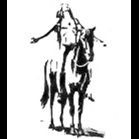Pheu Thai's Hopes Rest On Yaowapa
-
Recently Browsing 0 members
- No registered users viewing this page.
-
Topics
-
Popular Contributors
-
Latest posts...
-
-
9
Things that Pxxx you off when shopping
We find the service in Foodland stores in Bangkok to be excellent, The Foodland staff are very helpful and very polite, and the stores have a wide range of products, many of them up-market brands. -
34
Misleading chevrons on Jomtien 2nd road.
Talk about incorrect signage. 200 metres from our local school, and schools in other places, there is 30 on a blue background ie Minimum Speed. 100 meters later they are correct. -
266
ALL VACCINES WILL KILL YOU - The evidence is overwhelming
Yep, that's the official 'authorized narrative' regarding the Spanish Flu. If only we would have had those magical vaccines then, we would have prevented the 50-100 million deaths attributed to the Spanish Flu. But the Spanish Flu, didn't originate in Spain, it wasn't a Flu and was most probably caused by an early experimental vaccine given to US troops at Fort Riley in Kansas in 1918, that were then sent to Europe. Here a summary from a 2018 article aptly titled: Did a Vaccine Experiment on U.S. Soldiers Cause the “Spanish Flu”? Source: https://healthimpactnews.com/2018/did-a-military-experimental-vaccine-in-1918-kill-50-100-million-people-blamed-as-spanish-flu/?utm_source=chatgpt.com The reason modern technology has not been able to pinpoint the killer influenza strain from this pandemic is because influenza was not the killer. More soldiers died during WWI from disease than from bullets. The pandemic was not flu. An estimated 95% (or higher) of the deaths were caused by bacterial pneumonia, not influenza/a virus. The pandemic was not Spanish. The first cases of bacterial pneumonia in 1918 trace back to a military base in Fort Riley, Kansas. From January 21 – June 4, 1918, an experimental bacterial meningitis vaccine cultured in horses by the Rockefeller Institute for Medical Research in New York was injected into soldiers at Fort Riley. During the remainder of 1918 as those soldiers – often living and traveling under poor sanitary conditions – were sent to Europe to fight, they spread bacteria at every stop between Kansas and the frontline trenches in France. One study describes soldiers “with active infections (who) were aerosolizing the bacteria that colonized their noses and throats, while others—often, in the same “breathing spaces”—were profoundly susceptible to invasion of and rapid spread through their lungs by their own or others’ colonizing bacteria.” (1) The “Spanish Flu” attacked healthy people in their prime. Bacterial pneumonia attacks people in their prime. Flu attacks the young, old and immuno-compromised. When WW1 ended on November 11, 1918, soldiers returned to their home countries and colonial outposts, spreading the killer bacterial pneumonia worldwide. During WW1, the Rockefeller Institute also sent the anti-meningococcic serum to England, France, Belgium, Italy and other countries, helping spread the epidemic worldwide. -
-
59
BREAKING NEWS Police Aircraft Crashes Into Sea Off Cha-am, Leaving Four Dead
Aircraft with long, thin wings, like modern jet airliners, have a fantastic glide ratio, while aircraft with stubby wings do not have such an amazing glide ratio. If the connections between the elevator and the pilot/s fail, things go bad quickly. If you fly too slow, the wing stalls, and you need hundreds of feet at least to recover, many planes need thousands (like the famed PC-12). Many single-engined aircraft go into a spin or a death spiral (not the same thing), while twins are sometimes more resistant, but can go into a flat spin, a very dangerous situation. If one engine fails while flying slowly, you're in deep <deleted> sitting in a twin, while if you are in a single-engined aircraft you dive to regain speed and try to find a nice landing spot straight ahead. Twins, like the aircraft in question, are more draggy than their single-engined version, due to the fact that the frontal area is much bigger (unless the engines are buried body or the wing), and a Beaver is by design quite draggy, so adding an engine does not help when the engines stop; rather, the reverse. Recently, a low-drag twin in the USA crashed after something had happened to its rudder (the NTSB will know two years from now). This was a test flight, like the Beaver's, over Cha-Am (mentioned above), but it had three generations of a pilot family onboard, all very qualified pilots (tens of thousands of hours as PIC). Just seconds after take-off, the rudder was locked hard left, so the PIC throttled down the right engine, trying to compensate for the roll and involuntary turn to the left (plus adding full right ailerons) after ten circles, or so, around the airfield, at slightly over tree-top height, till they crashed, killing all three onboard in a fiery crash. Yours, Tord former glider pilot, ex-SwAF, and amateur aerodynamicist. PS I have heard it flying over our house in Hua Hin a few times, the engines sounding just fine.
-
-
Popular in The Pub
-





.thumb.jpeg.d2d19a66404642fd9ff62d6262fd153e.jpeg)




Recommended Posts
Create an account or sign in to comment
You need to be a member in order to leave a comment
Create an account
Sign up for a new account in our community. It's easy!
Register a new accountSign in
Already have an account? Sign in here.
Sign In Now